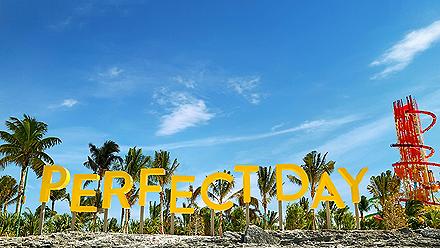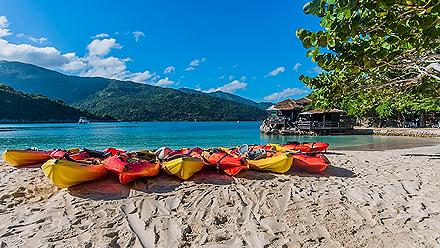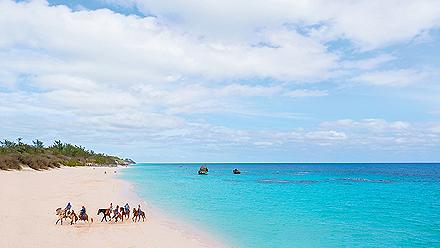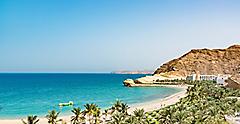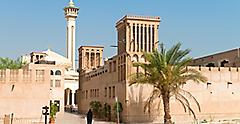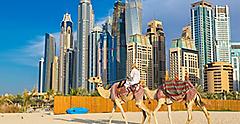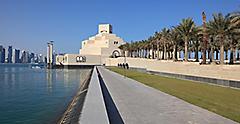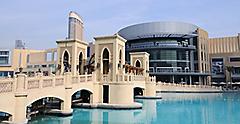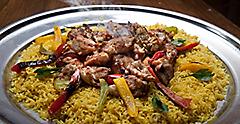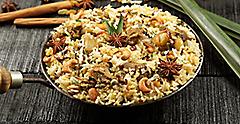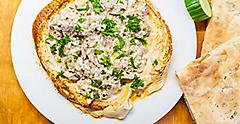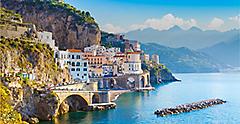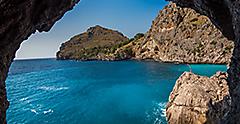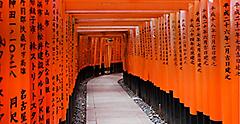
Explore the extravagance of the Arabian Gulf and North Africa, and witness thousands of years of history.
Set sail on Arabian Gulf cruises to explore exotic souks (Arabian markets), smell fragrant incense wafting from a traditional bakhoor burner and sample spicy dishes like machboos, a delicious seafood or meat stew. Visit the mosques of Muscat, Oman, before taking in the sprawling, modern city of Dubai from the tallest structure in the world, the Burj Khalifa. Step back in time in the Al Fahidi Historical District, or soak up the culture at the extraordinary Museum of Islamic Art. If you're feeling adventurous, get a glimpse of giraffes at the Arabian Wildlife Park, or go dune bashing through the desert on a safari. With thousands of years of history and culture brewing in the deserts of the Arabian Gulf and North Africa, you're bound to be swept away.
Arabian Nights and Days at Sea
Explore the extravagance of the Arabian Gulf and North Africa, and witness thousands of years of history.
Get Royal Deals, Sign Up Today

LIVIN' THE LUXURIOUS LIFE
If you're in the mood for a vacation full of luxury and relaxation, the Arabian Gulf and North Africa are the places to be. Indulge in the most unforgettable culinary experiences, go shopping in the souks for exclusive items, relax on the perfect beaches and try out the most calming spa treatments. When it comes to pampering, there's no better place to visit.
SOUK IN THE SHOPPING
Learn from the best shoppers in the world's largest shopping center, Dubai Mall. Whether you shop at this massive Arabian shopping paradise or at a colorful souk in Muscat or a traditional open-air market in Doha, you'll find anything you might need for any budget with your Dubai cruise.
if there's a will, there's a wave
You won't have to look far for inviting sandy beaches with year-round warm, turquoise water. Let yourself be spoiled in a luxurious beach club when you cruise to Dubai. Try out some watersports at Al Qurum Beach in Muscat, Oman, or just stick to poolside drinks and mouthwatering cuisine.
REVEL IN RELAXATION
Allow yourself to be taken into a luxurious world of relaxation at an Arabian spa. Unwind in the hammams (traditional Turkish baths), sprawl out in the steam rooms, and give yourself over to a lavish beauty treatment. You're sure to leave thoroughly rejuvenated.

DIVE INTO THE DESERT
While Oman still has a more traditional culture, the United Arab Emirates, Bahrain and Qatar have quickly become cosmopolitan destinations. If you're looking for a unique blend of ancient history and modern moments, these are the perfect places to visit.
EN-GULF YOURSELF IN HISTORY
Cities in the Arabian Gulf have grown and modernized rapidly in the past few decades. To see the distinct mix of old and new, visit the several restored historical districts, which give an impression of lifestyle of the pre-1960s Arabian culture. Learn more about the compelling history of the Gulf in the national museums of neighboring countries, or visit the fascinating Portuguese forts in Oman and Bahrain during your vacation.
CHASE A MIRAGE
Join a 4X4 safari adventure to experience the breathtaking beauty of the desert. Climb a sand dune, or even try some quad biking, sand skiing or camel riding. However, you decide to take in the rolling dunes of the desert, be sure to look to the horizon to see the captivating fata morgana mirage effect, where ships and coastline appear to float above the water.
EXPLORE EXHILARATING EXHIBITS
Hubs of ancient and modern art, the United Arab Emirates and Qatar are both home to incredible exhibits. Abu Dhabi Louvre is housed in an extraordinary building and encompasses the history of civilization, while the exceptional Museum of Islamic Art in Doha has one of the largest collections of Islamic art in the world.

Go Back In Time In The
Enchanted and Historical Arabian Gulf
The Arabian Gulf and North Africa mix heritage with modernity, so you're sure to find centuries-old forts and towers near sprawling cosmopolitan cityscapes. Whether you explore the area through a desert safari, shop 'til you drop in an enormous city mall or stroll the winding lanes of a traditional quarter, you'll find that in the Arabian Gulf, adventure is just around the corner.
MODERN DESERT CITIES
You'll be surprised by a visit to Oman, the United Arab Emirates, Qatar and Bahrain. The Arabian Gulf, which is located in Asia, experienced a fast evolution after the discovery of oil. Fishing and pearling villages developed into global centers of commerce, finance and tourism.
COLORFUL AND EXOTIC
To see more of the Arab world, consider a Mediterranean cruise with a stop in Morocco. The North African country borders both the Mediterranean and the Atlantic. Visit a kasbah (a traditional fortified citadel from medieval times), look for special souvenirs in the bustling souks, sample the delicious cuisine, and go hiking in the breathtaking nature.
WHAT TO KNOW
BEFORE YOU GO
Winter is one of the best times to visit the Arabian Gulf with a cruise, since it's still warm and dry here while it's cold and rainy in other parts of the world. Be prepared for a different kind of winter wonderland, as the rolling dunes of the desert stay warm and sunny year-round.
You'll stay dry no matter how you choose to explore the Arabian Gulf, as there is no rainy season. Even though you're sure to feel the heat, don't forget to bring a hat, shawl or cardigan for air-conditioned places and for visits to religious sites or traditional areas.
The United Arab Emirates and Qatar are global epicenters where all kinds of people come to conduct business and explore the vast and lively cities. Be sure to indulge in diverse dishes in the shopping centers and learn a few words in different languages.
If you're looking to find local culture, visit Oman or Bahrain. In these countries, you'll glimpse the Arabian past at historical sites and eat homemade local cuisine with distinctive bites like halloumi cheese, grilled shuwa (meat marinated in oil and spices) and crisp Omani bread.
1
Don't worry about communication in the Arabian Gulf: English is widely spoken and understood in this multicultural part of the world.
2
In the Arabian Gulf, you'll find the most luxurious restaurants and the most exclusive boutiques, but there are also plenty of cheaper eateries and shopping options for smaller budgets.
3
In the winter, temperatures are mild, but during other parts of the year, you'll soon notice you need to spend most of your time indoors to beat the heat.
CUISINE
STEP INTO SPICE WORLD
The Gulf States offer a wide choice in restaurants serving the varied cuisine of the communities that call this region home. From the simplest of eateries or the most luxurious dining temples, one thing remains constant: a love of warming spices like cardamom, cumin, cinnamon and za'atar that defines the flavor of Middle Eastern food.
BITE INTO BIRYANI
You might be familiar with biryani from your favorite Indian restaurant, but this popular dish of rice, spices, meat and vegetables is a Middle Eastern staple, too. Versions from the Arabian Gulf often add distinctive yogurt and dried fruit to the mix and feature lamb (often in the form of meatballs) alongside shredded chicken.
A MIX OF MEZZE
Mezze are small plates popular throughout the southern Mediterranean and the Middle East, and you can find them at cafes, bars and restaurants throughout the region. Try traditional hummus made with spicy local olive oil and fresh chickpeas. Sample kibbeh, fritters of finely ground meat, bulgur wheat and spices served with quince paste or yogurt sauce.
ROCK THE KABSA
Look out for authentic Emirati or Qatari restaurants serving up the traditional dish kabsa. This much-loved recipe features cuts of whole chicken stewed for hours in tomato puree with nutmeg, cinnamon and other spices, with raisins for some added sweetness — all served over fragrant rice, of course.
